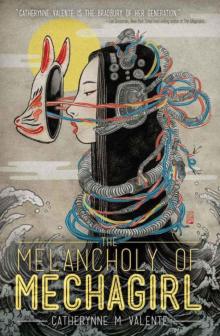


Three Cups of Deceit: How Greg Mortenson, Humanitarian Hero, Lost His Way, Page 2
Jon Krakauer
lovingly nursed back to health in the home of Haji Ali. He set no villagers’ broken bones. On that crisp September morning, shortly before returning to America, Mortenson did not put his hands on Haji Ali’s shoulders and promise to build a school. In fact, Mortenson would not even make the acquaintance of Haji Ali, or anyone else in Korphe, until more than a year later, in October 1994, under entirely different circumstances.
The first eight chapters of Three Cups of Tea are an intricately wrought work of fiction presented as fact. And by no means was this an isolated act of deceit. It turns out that Mortenson’s books and public statements are permeated with falsehoods. The image of Mortenson that has been created for public consumption is an artifact born of fantasy, audac-ity, and an apparently insatiable hunger for esteem. Mortenson has lied about the noble deeds he has done, the risks he has taken, the people he has met, the number of schools he has built. Three Cups of Tea has much in common with A Mil ion Little Pieces, the infamous autobiography by James Frey that was exposed as a sham. But Frey, unlike Mortenson, didn’t use his phony memoir to solicit tens of millions of dollars in donations from unsuspecting readers, myself among them. Moreover, Mortenson’s charity, the Central
Asia Institute, has issued fraudulent financial statements, and he has misused millions of dollars donated by schoolchildren and other trusting devotees. “Greg,” says a former treasurer of the organization’s board of directors, “regards CAI as his personal ATM.”
★ ★ ★
this is what actually happened after Mortenson aban-
doned his attempt on K2. He trekked down from the moun-
tain in the company of three companions: his American
friend and climbing partner Scott Darsney; his Balti porter, Mouzafer; and Darsney’s porter, Yakub. According to each of t h r e e c u p s o f d e c e i t 7
these companions, the four men walked together into Askole, whereupon they immediately hired a jeep to take them to the city of Skardu, the district capital. When they drove out of the mountains, Darsney assured me, Mortenson “didn’t know Korphe existed.”
Upon their arrival in Skardu, Mouzafer and Yakub
quickly departed for their village in the Hushe Valley, a twelve-hour drive to the east, while Mortenson and Darsney stayed in Skardu. They booked a room at the K2 Motel, a comfortable lodge renowned among Western climbers and
trekkers for its hospitality and excellent food. After relaxing there for the better part of a week to recuperate from their debilitating expedition, according to Darsney, he and Mortenson hired a jeep to take them to the village of Khane in the Hushe Valley, the home of their expedition cook, Akhmalu, who had become a friend during the months they’d spent together on K2. The two Americans stayed in Khane for several days as Akhmalu’s guest, and Mortenson developed great affection for the residents of the village. When Mortenson learned they had no school, he promised Akhmalu he would return to Khane the following year and build one. Then Mortenson and Darsney departed for Islamabad
(via a leisurely sightseeing detour that included Peshawar and the Khyber Pass) to catch a flight home.
Back in the States, Mortenson lived in the San Francisco Bay Area and supported himself as a nurse. In his spare time, he tried to raise money for what he’d christened the Khane School Project. Erica Stone, the director of the American Himalayan Foundation (AHF), remembers “when Greg appeared at my AHF door one day after his K2 expedition and wanted kind of vaguely to do something good.” Stone mentored him, encouraged him, and steered him toward potential donors. “I jokingly called him my science experiment,” she says, “because he was around so much.”
After nearly a year of fundraising, Mortenson had little to show for his efforts until the summer of 1994, when Stone included a short article by Mortenson in the American Himalayan Foundation newsletter. “I came to Hushe as part of an j o n k r a k a u e r
8
expedition to K2 in 1993,” he wrote.
After seventy days on the mountain, I spent some time in Khane. When I asked to see the school, the villagers took me up to a dusty apricot grove on a hill behind the village. A group of 85 children, five to twelve years old, were sitting in the dirt, reciting spelling tables…. Despite abject poverty, their spirits soared. It was obvious that these children were intensely loved by their community, that their well-being was a top priority.
But the village simply had no money for education or health care…. So I made the commitment to help realize a school and clinic in Khane.
I started this project because I care deeply about these people. Two years ago, my youngest sister Christa died suddenly after a valiant 23-year struggle with epilepsy. During her short life, her joyful spirit touched many people, especially me.
The Khane School Project is my way of honoring her. If you’d like to be part of this project, please give us a call.
Upon reading the article, a wealthy AHF supporter
named Jean Hoerni gave Mortenson $12,000—enough, by
Greg’s estimation, to build a simple five-room school building in Khane. In October 1994, Mortenson flew to Pakistan, purchased $8,000 worth of lumber and cement in Rawalpindi, and then hired a garishly decorated “jingle” truck to transport everything up the Karakoram Highway to Skardu. There,
the building materials were unloaded at a compound owned by Mohammed Ali Changazi, the tour operator and trekking agent who had managed the logistics for Mortenson’s K2 expedition the previous year. When Mortenson arrived in Skardu in 1994, he intended to build the school in Khane village, as he’d pledged to Akhmalu in 1993. But Mortenson had discussed his plans with Changazi, who tipped off the chieftain of a village called Korphe—a Balti elder named Haji Ali—who had legally adopted Changazi as a boy.
When he learned from his adopted son that a starry-
eyed American was coming to build a school, Haji Ali
resolved to get the school built in his village, Korphe, rather t h r e e c u p s o f d e c e i t 9
than Akhmalu’s village. Only Mortenson and Changazi know exactly what happened next—Haji Ali died in 2001—but a
few days after the truckload of construction materials was stacked in Changazi’s compound, Changazi introduced
Mortenson to Haji Ali. Shortly thereafter, Mortenson
reneged on his pledge to build the school in Khane and announced that he intended to build it in Korphe instead.
All of this diverges in irreconcilable ways from the
heartwarming tale recounted in the first hundred pages of Three Cups of Tea. A passage on page 97, for example, describes Mortenson’s triumphant “return” to Korphe in 1994, in which Mortenson, looking Haji Ali in the eye, declares, “I came back to keep my promise.”2 In fact, Mortenson had never set foot in Korphe until that moment, and rather than keeping a promise, he was breaking the vow he had made to Khane. On page 89, Mortenson adds insult to this injury when he chas-tises the Khane villagers, “I never made any promise,” accus-ing them of being greedy shysters for trying to hold him to the pledge he’d made in his sister’s name—a commitment memo-rialized in the article he’d written a few months previously.
★ ★ ★
in september 1995, Greg met a lovely, outgoing woman named Tara Bishop, with whom he felt a rare and immediate attach-ment. Six days later they married. Construction of the
Korphe school began in May 1996, under Mortenson’s
watchful eye. At the beginning of July, when the school walls were standing but the roof framing was not yet complete, Mortenson departed Korphe to spend time with Tara, who
had remained in the United States and was seven months
pregnant with their first child. Upon flying from Skardu to Islamabad, though, Mortenson impulsively decided to
postpone the next leg of his journey home after a chance encounter with a convivial Pashtun named Naimat Gul
Mahsud.
Naimat Gul remembers meeting Mortenson outside
the latter’s h
otel in the city of Rawalpindi, a couple of miles j o n k r a k a u e r
10
from the Islamabad airport: “It was just after dawn. There were light rain showers, and a cool breeze was blowing…. I saw a person making videos, and he suddenly turned his face towards me and waved his hand.” A friendly conversation ensued. When Naimat Gul proudly explained that he was a member of the indomitable Mahsud tribe, and hailed from South Waziristan Agency, a region strictly off-limits to foreigners, Mortenson’s “face filled with curiousness,” Naimat Gul recalls, “and he said he was anxious to visit. He asked me if this was possible. I said, ‘Yes, why not? You may go with me if you are seriously intended.’… I briefed him that he would be bound not to tell any government official,” lest Mortenson be arrested for illegally entering the Federally Administered Tribal Areas, or FATA.
Naimat Gul later sent me a handwritten card from
Mortenson confirming their plan to embark on the long drive to Naimat Gul’s ancestral homeland on July 13, 1996, in a Toyota Corolla that Naimat Gul had rented. After spending their first night together in Peshawar, Mortenson and Naimat
Gul hit the road again early on July 14, crossing the border into the forbidden tribal areas at midday. As they continued driving west and then south, the flat, barren earth rose into a labyrinth of high ridges bristling with thorn-studded oaks. It was a rugged landscape, but a lovely one—somewhat reminis-cent of the country around Bozeman, Montana, where four months earlier Greg and Tara had moved to raise a family.
Late in the afternoon, Mortenson and Naimat Gul passed
from North Waziristan into South Waziristan, and as the sun went down they arrived in Tehsil Ladha, Naimat Gul’s home turf (a tehsil is a Pakistani administrative division roughly analogous to an American county).
Little did Naimat Gul know, when he offered to take
Mortenson to his village and serve as his host and guardian there, that his amiable guest would one day write a book in which their pleasant sojourn would be transformed into an elaborate tale of abduction and intimidation at the hands of murderous jihadis—an account that fills an entire chapter of Three Cups of Tea (pages 154-173) and that Mortenson has t h r e e c u p s o f d e c e i t 11
repeated in hundreds of media interviews.
In most of these interviews, Mortenson has distilled
the story into an attention-grabbing sound bite. During an appearance on CBS Evening News on October 23, 2008, for example, he said of the experience, “I was kidnapped for eight days in Waziristan by the Taliban.” In a two-minute promotional video posted on the website of his book publisher, Penguin, Mortenson was slightly more loquacious: “I got kidnapped by the Taliban for eight days…. It was quite a frightening experience. The first three days, all I could think about is they might take me outside at any moment and finish me off.”
In Three Cups of Tea, however, where he had room to get creative, Mortenson spun a long, fantastical yarn festooned with enthralling details. In this account, Mortenson first encountered Naimat Gul Mahsud in the treacherous city of Peshawar rather than Rawalpindi (where the two men actually met), and Naimat Gul’s name was changed to “Mr. Khan.”
Just before sunset, they arrived in Ladha, South Waziristan, and “Khan” parked his gray Toyota inside a warehouse for the night.
The scene inside the warehouse set Mortenson immediately on edge. Six Wazir men with bandoliers criss-crossed on their chests slumped on packing crates smoking hashish from a multinecked hookah. Piled against the walls, Mortenson saw stacks of bazookas, rocket-propelled grenade launchers, and crates of oily new AK-47s….
Khan and the elder of the gang, a tall man with rose-
colored aviator glasses and a thick black mustache that perched, batlike, on his upper lip, talked heatedly in Pashto about what to do with the outsider for the evening. After they’d finished, [Khan] took a long draw from the hookah and turned to Mortenson. “Haji Mirza please to invite you to his house,” he said, smoke dribbling through his teeth.
The fictional Haji Mirza, the fellow with the batlike
mustache, lived in a hilltop compound where a “gun tower j o n k r a k a u e r
12
rose fifty feet above the courtyard so snipers could pick off anyone approaching uninvited.” After a meal of roast lamb, during which the Wazir tribesmen “attacked it with their long daggers, stripping tender meat from the bone and cram-ming it into their mouths with the blades of their knives,”
Mortenson fell asleep on the floor of the compound. Two hours later he was rudely awakened by someone dangling a kerosene lantern in front of his face,
sending shadows lurching grotesquely up the walls. Behind the lamp, Mortenson saw the barrel of an AK-47 aimed, he realized, his consciousness ratcheting up a notch with this information, at his chest. Behind the gun, a wild man with a matted beard and gray turban was shouting in a language he didn’t understand.
Mortenson was jerked to his feet and dragged out the
door, where he was blindfolded, thrown in the bed of a
pickup truck, and driven to another location. There, he was locked inside a “spare, high-ceilinged room” with a “single small window, shuttered from outside,” and guarded by
two thugs with AK-47s. In the morning, when Mortenson
indicated he needed to visit a toilet, his abductors escorted him to a crude stall with a squat latrine, where one of the guards “walked inside with him while the other stared in from outside.” Mortenson explained, “To have to, you know, clean yourself afterward while they stare at you, was nerve-wracking.”
According to Mortenson, he was imprisoned for eight
days, with nothing to read but “a tattered Time magazine dated November 1979.” By the middle of his fifth night in captivity,
Mortenson felt a wave of blackness lapping at his feet, surg-ing up to his knees, threatening to drown him in despair….
Through force of will, Mortenson held the black water at bay, and turned the pages of the magazine, searching for a foothold in the warm dry world he’d left behind. Dawn of his sixth t h r e e c u p s o f d e c e i t 13
morning in captivity found Mortenson’s eyes tearing up over an ad for a WaterPik Oral Hygiene Appliance.
By and by, the ringleader who ordered his abduction
showed up, a man described by Mortenson as “an emerging Taliban commander” who spoke perfect English. Mortenson told the commander he ran a charity that was building a school in Baltistan, and “planned to build many more schools for Pakistan’s most neglected children,” hoping his good intentions would convince the Talib to release him, but the gambit failed. So Mortenson tried a different tack, telling the commander that his wife was about to give birth to their first child, a son (even though Mortenson had already learned that the baby would be a daughter), because he “knew that for a Muslim the birth of a son is a really big deal…. I felt bad about lying, but I thought the birth of a son might make them let me go.”
This ploy, alas, also failed to win his freedom. At 4:00 in the morning of the ninth day, when the commander blindfolded Mortenson and put him in the bed of a pickup truck full of armed men, Mortenson assumed his execution was
imminent:
Back then, before 9/11, beheading foreigners wasn’t in
fashion…. And I didn’t think being shot was such a bad way to die. But the idea that Tara would have to raise our child on her own and would probably never find out what happened to me made me crazy. I could picture her pain and uncertainty going on and on and that seemed like the most horrible thing of all.
Fortunately, as Mortenson was taking what he feared
were his final breaths, the truck skidded to a stop, whereupon the commander removed Mortenson’s blindfold and gave
him a hug. “We’re throwing a party,” the Talib announced.
“A party before we take you back to Peshawar.” Instead of being executed by a Taliban firing squad, Mortenson was feted as the guest of honor at a
rowdy Pashtun hoedown
featuring barbecued goat, lots of hashish, and boisterous j o n k r a k a u e r
14
dancing. Throughout the bacchanal, dozens of Taliban embraced Mortenson like a long-lost brother and stuffed wads of hundred-rupee notes into his pockets. “For your schools!”
the commander explained, shouting in Mortenson’s ear to be heard over bursts of celebratory gunfire. “So, Inshal ah, you’ll build many more!”
Giddily [Mortenson] joined the celebration, goat grease trickling down his eight-day beard, performing the old Tanzanian steps he thought he’d forgotten to shouts of encouragement from the Wazir, dancing with the absolute bliss, with the wild abandon, bequeathed by freedom.
If this stirring resolution to Mortenson’s ordeal seems a bit far-fetched, it is. The entire story was fabricated. There was no wild party, no Taliban commander, no abduction of any sort. According to Mansur Khan Mahsud, a Pakistani
scholar who frequently accompanied Mortenson during his visit to Tehsil Ladha, Mortenson was never threatened, no one ever pointed a gun at him, and no one ever held him against his will, even momentarily, during the approximately fifteen days he spent in South Waziristan. “Greg was never worried or frightened,” says Mansur Khan, now the director of Research and Administration at the FATA Research Centre, an internationally respected, nonpartisan think tank in Islamabad. “No, no, no. He really enjoyed his stay there.
And he was given very good treatment. If he tells, ‘I have been kidnapped,’ he is lying. He was an honored guest of the whole village.”
During Mortenson’s visit to Ladha, he was housed in a
village called Kot Langerkhel, at the home of the deputy inspector general of the police. A photograph shows Mortenson relaxing in this home, which had comfortable furniture and was connected to the national electrical grid. According to Mortenson, he was abducted in the middle of his first night in South Waziristan, and spent every night thereafter in captivity sleeping on an earthen floor “under a musty blanket.”














